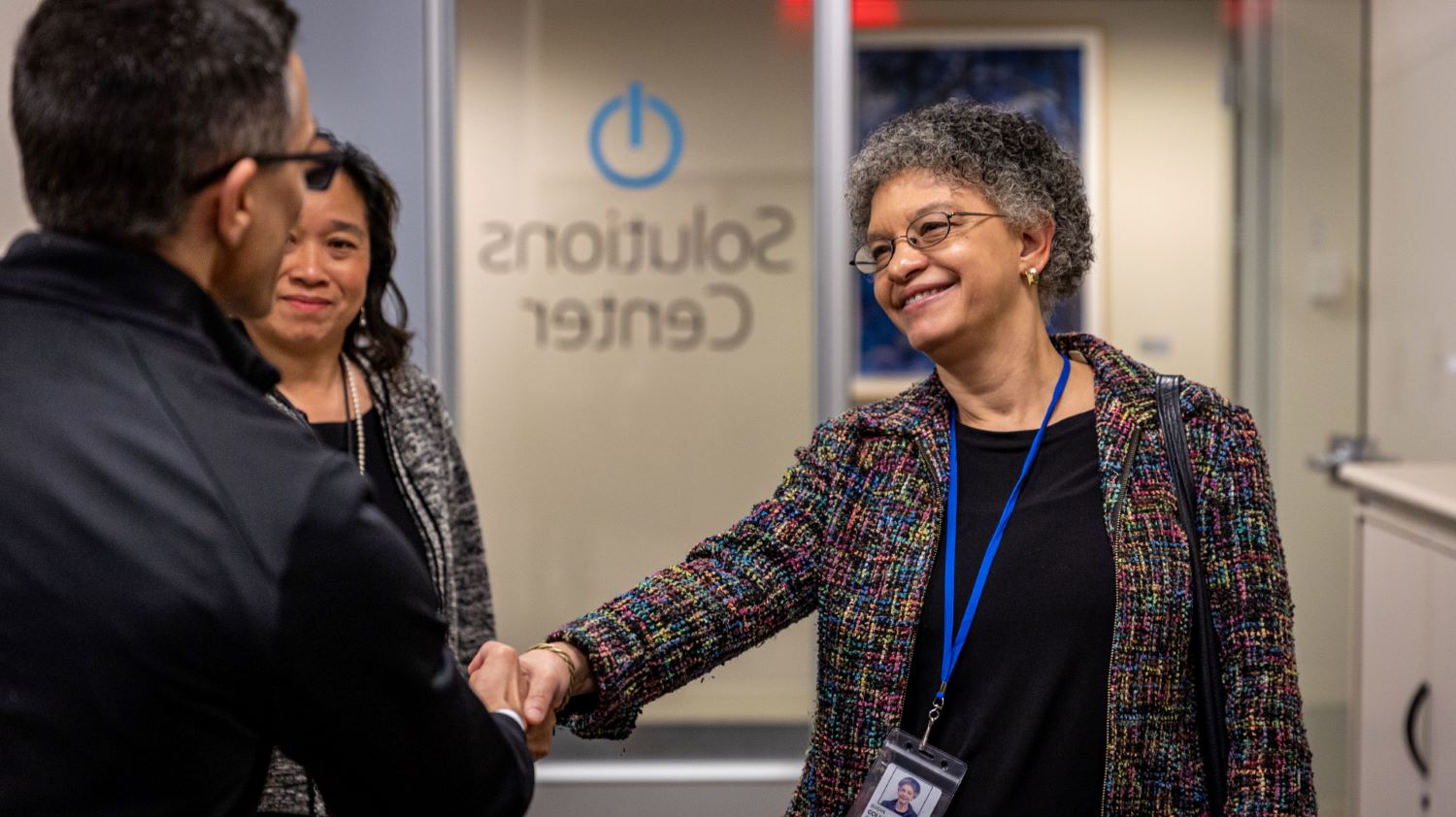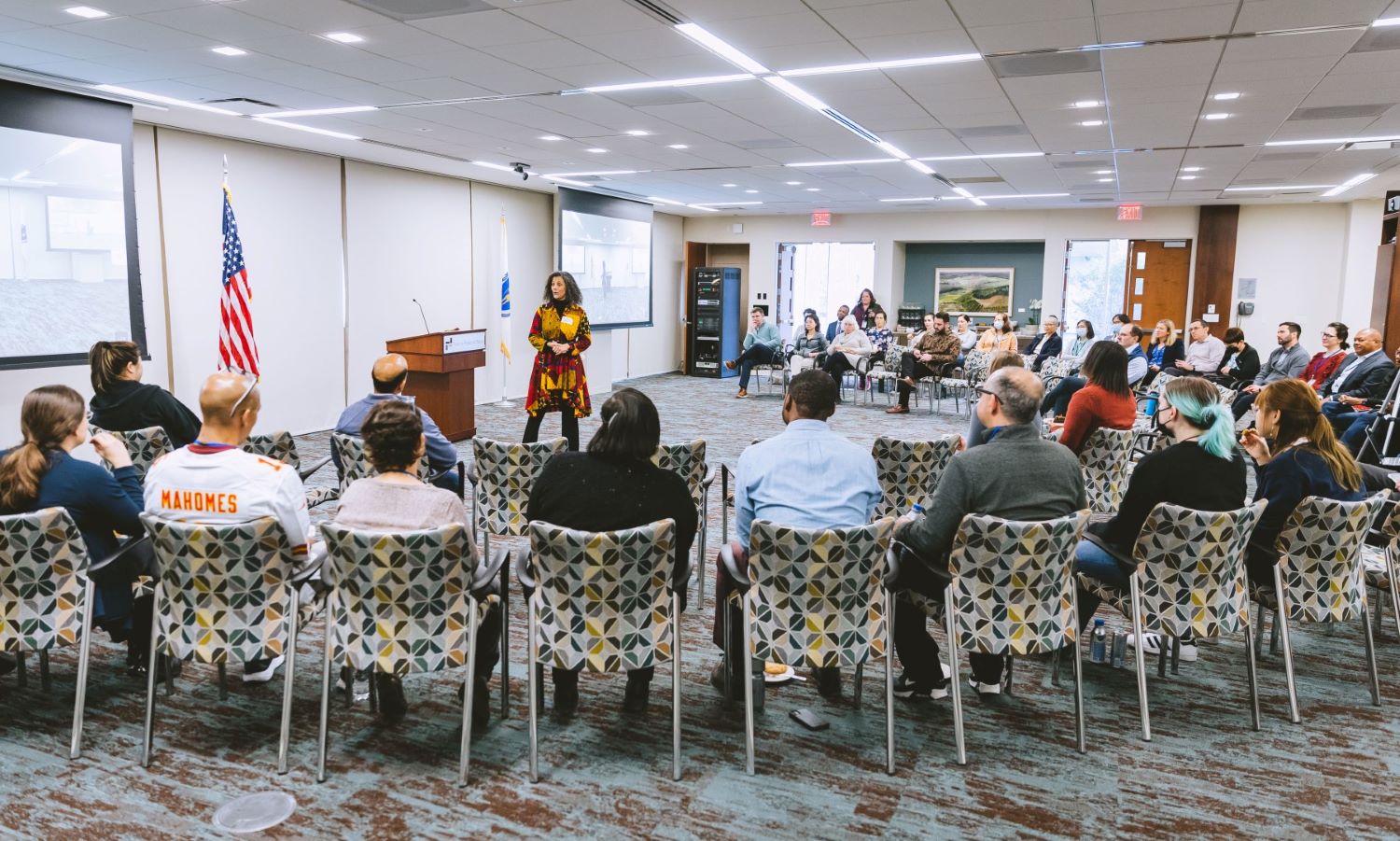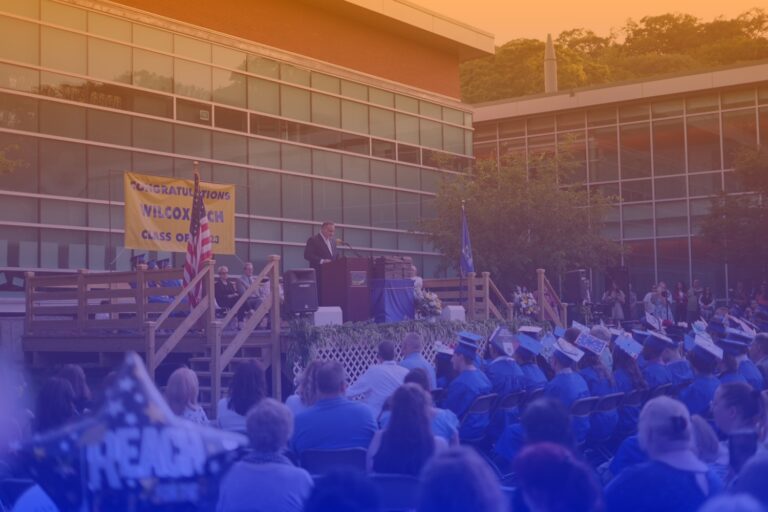Cut Through the Noise – Boston’s Effort in Filling up Staff in the Workplace
You’ve certainly heard of Boston because of its historical significance in crucial American Revolutionary War events like the Boston Tea Party and the Battle of Bunker Hill. Perhaps you are familiar with the city because of its academic rigor, with outstanding universities such as Harvard and MIT.
Boston also has several historical landmarks, such as the USS Constitution and Fenway Park. However, among all of these prominent things, foods in Boston certainly deserve their fair share of attention.
Beyond the fundamentals of traditional New England cuisine, the city also offers everything from luxury omakase tasting booths to cafés influenced by street food, among other things.
When dining out in Boston, try every bit of seafood from the nearby waterways, enjoy a variety of international flavors, and tuck into a handful of the prettiest local eateries. In these restaurants, customers will be served by specialists, kind and supportive.
And that’s what happened before the pandemic hit. Now, the local doesn’t have enough workers which forces some good spots to close. And even with plentiful jobs opportunity, the City of Boston is still in an uncomfortable situation when demand for workers far exceeds the supply of available workers. This is not the pain of only hospitality industry, but the puzzle that the whole economy is trying to solve.
The Silent Squeeze – Labor Shortage Taking a Toll on Massachusetts
The COVID-19 pandemic created a massive disturbance in the American labor force, which many considered to be “The Great Resignation.” In 2022, more than 50 million employees left their jobs, many of whom were in search of an improved work-life balance and flexibility, increased compensation, and a strong company culture. This follows the 47.8 million people who resigned their employment in 2021.
The Massachusetts Taxpayers Foundation (MTF), through an alarming string of statistics underlying severe workforce shortages and a contracting talent pipeline, reiterated its call to policymakers to avoid future blows and “take aggressive actions” tied to housing, transportation, education, workforce training and recruitment and retainment incentives.
Many negative tendencies existed before to the start of the COVID-19 pandemic, which only exacerbated economic and competitive challenges, including a wave of early retirements, according to the MTF.

“Policymakers must proactively work to reverse this trend by making Massachusetts a more affordable and competitive place to be in order to ensure the Commonwealth’s future economic growth,” MTF President Eileen McAnneny said in a statement. “Gone are the days we can count on Massachusetts’ exceptionalism to attract the best and the brightest.”
The workforce population, defined as Massachusetts residents aged 20 to 64, looks to have peaked in 2018 at 4.18 million. According to MTF, the population is anticipated to shrink by 180,000 by 2030.
According to the MTF report, Massachusetts has more over two available jobs for every unemployed individual, which is double the ratio from five years ago. According to data from September 2022, Massachusetts has a labor shortfall of approximately 160,000.
Over the years, the labor shortage has been haunting the whole stage, and one of the sectors that bears the brunt is hospitality.
Bear the Brunt – Restaurants Teetering on the Precipice of Shutdown
Jobs that demand in-person attendance and traditionally have lower wages have had a more difficult time keeping workers during the pandemic reshuffling. Since July 2021, for example, the Accommodation and Food Services industry has had the highest quit rate, constantly exceeding 4.9 percent.
The retail trade industry’s quit rate isn’t far behind, with rates holding around 3.3 percent so far in 2023. Both industries continue to have higher leave rates than the declining national average of 2.6 percent for March 2023.
In 2021, the labor crisis was having an impact on Fourth of July meal plans, as some Massachusetts businesses elected to close for the holiday, citing a lack of workers.
Lindsey’s Family Restaurant in East Wareham was closed for the first time in more than 70 years due to a lack of labor. They had around half the staff they usually had during the peak season.
“I’ve been through so much in 40 years with this restaurant, so many things that I thought brought me to my knees, but this is the worst,” owner Cheri Lindsey said.
Lindsey stated that she chose to close for the holiday because she did not want to compromise service and disappoint her clients. Due to the shortfall, which she attributed in part to unemployment benefits, the restaurant was only open five days a week instead of the customary seven.
“There is just not enough people to work. They’re just like, ‘I’m not working,'” Lindsey said.
The shortage has had an effect on the entire supply chain. Due to an absence of drivers, the restaurant’s chef said he was waiting days for deliveries from distributors. As a result, he has had to remove products off the menu for the time being.
“It’s like walking across a floor of cardboard wondering, is today going to be the day I fall through?” executive chef David Veronneau said.
The restaurant was among the numerous businesses struggling to navigate through the holiday weekend, which had historically been one of the most profitable days of the year. The Gateway Tavern temporarily closed for a week starting on July 4th. When contacted via phone, an employee mentioned that this decision was partly aimed at providing their workers with a much-needed break during the ongoing labor shortage.

The Massachusetts Food Association, representing the grocery industry, was also experiencing the adverse impacts of this shortage. In a recent development, they had composed a letter addressed to Gov. Charlie Baker, urgently urging him to consider implementing incentives for people to return to work—something that the state of New Hampshire had already put into practice.
“As soon as their measure went through, they had more applications than they’ve had in the last year and a half. It’s proof that it does work,” said Brian Houghton, the group’s senior vice president of government affairs and communications.
Even three years after the pandemic began, the restaurant labor shortage remains one of the industry’s most pressing issues. Although the labor market has improved, most restaurant operators are still looking for restaurant workers. According to the National Restaurant Association, more than 87% of restaurant owners plan to hire in 2023 if they can find competent candidates.
Finding and retaining outstanding employees is more critical than ever, given the tight labor market, inflation, and the likelihood of a recession. But to deal with the ongoing trouble, restaurants have to be innovative in the hiring process.
Adapting to Labor Shortages – The Inventive Path of Hotels and Restaurants
In the past, if you wished to place a takeout order at Mac’s Seafood, a restaurant with multiple establishments on Cape Cod, the process entailed making a direct phone call.
And Mac Hay, the owner, said those conversations could get lengthy.
“You’d ask a question as a person that’s taking the order, they’d turn around and ask the people in the room, ‘Did we want to add onions?’ And then It’s like, oh, my God, you’re waiting there, and you’ve got five people on hold,” Hay said.
Back then, if you wanted takeout from Mac’s Seafood on Cape Cod, you had to give them a call, and those conversations could take a while, as Mac Hay, the owner, recalls.
However, when the pandemic hit, Mac’s Seafood switched to online ordering. This change saved about five to seven minutes of staff time for each order. It was just one of the ways they adapted to make the most of their staff’s time.
In the last couple of years, many hospitality companies faced challenges in hiring, leading them to come up with creative solutions. Now, some of these innovations have transformed how the industry operates. For example, certain hotels started automating tasks and allowing guests to check in through kiosks or their phones.
“You’d lose the human touch a little bit, but for many of these things, they’re transactional businesspeople,” said Stephen Pratt, a tourism professor at the University of Central Florida.
Indeed, our inclination to minimize human contact amid the pandemic opened up possibilities for hotels to offer certain services in a more customizable way. Take, for instance, room cleaning, which used to be a standard expectation.
“At the beginning, we didn’t want people in our rooms,” said David Sherwyn, a professor at Cornell University’s School of Hotel Administration. “I don’t need turndown service. I don’t know where you’ve been, you know.”
Hotels have also found that they require fewer staff to manage their operations and have started turning to software solutions instead. According to Sherwyn, “If a shift becomes available, it’s assigned to Stephanie first, and she has a limited time to respond. If she doesn’t take it, then it moves to me. It’s all automated now, whereas before, it used to involve human phone calls.”
It’s also crucial to be selective about the individuals you hire, as emphasized by restaurant owner Hay. He mentioned, “During a labor shortage, even though the temptation might be to hire anyone available to cover shifts, it’s still essential to maintain high standards and bring on board high-quality employees.”
Because, as tourism professor Pratt points out, when people think of hospitality, they may say they’re coming somewhere for the food or the views. What they will remember, however, are the individuals they encounter.
That’s what’s happening on the side of restaurants and hotels. However, Massachusetts is not only known for food, but the main driving force of the region, biotech is suffering the same dilemma too.
Talent Shortage Haunting – Biotech Industry Can’t Bloom
Over the last two decades, the Cambridge area has become a biotech center in the United States. The market is now busier than ever, with companies frequently receiving millions of dollars in venture capital, startups sprouting on a monthly basis, and developers seemingly planning more lab space by the day. However, the supply of skilled individuals to fill all of the new jobs cannot keep up with the rising demand.
Hiring “is definitely more competitive than it was a few years ago, there’s just no question about it,” said Michael Gilman, chief executive of Waltham-based Arrakis Therapeutics, which more than doubled its staff during the pandemic.

The abundance of businesses reflects the willingness of investors to pump more money into the world’s leading biotech hub. However, with each new firm that emerges from stealth mode or a mega-funding round that comes with mega-hiring targets, the personnel problem worsens.
According to the most recent MassBio report, approximately 85,000 individuals work in the state’s life sciences sector, a 55 percent increase from 2008.
Most of the hiring occurs in Cambridge, where enterprises posted more than 2,630 biotech job listings on Indeed.com from July 2021 through mid-January 2022, according to Biotech Networks, which tracks employment.
Large companies, such as Vertex Pharmaceuticals and Takeda Pharmaceutical, as well as Moderna Therapeutics and its venture capital backer Flagship Pioneering, were seeking the most workers during that period.
“You can’t walk two blocks around Kendall Square without receiving a job offer,” said Jeanne Gray, chief people officer at Relay Therapeutics in Cambridge, only half-kiddingly. “I get the sense that a lot of candidates know the market is hot.”
Employee turnover is on the rise, too. In the year 2021, approximately 16.5 percent of life sciences employees in Massachusetts chose to leave their positions voluntarily, as revealed by a recent survey conducted by research firm Radford. This percentage has risen from 13 percent in 2018. These figures, in fact, are significant enough to impact a company’s endeavors to expand and progress.
Money Comes First – Compensation’s Impact on Recruitment and Retention
As per data from the Bureau of Labor Statistics, chemists and scientists in Massachusetts were earning an average salary of around $100,000 as of May 2020. However, biotechnology companies have realized that relying on historical data and closely monitored benchmark surveys from sources like Radford can rapidly become obsolete.
“One of my companies realized they had fallen behind in some positions by more than 10 percent,” said Tony Mullin, a biotech human resources executive. “They offered $130,000 and were losing candidates because they were getting $145,000 or $150,000 from other companies.”
Some organizations appear to be actively outbidding each other for candidates, according to executives, but most acknowledged it isn’t a good strategy.
“That’s not a sustainable game to be in, upping the ante all the time,” said Diego Miralles, chief executive of Flagship-backed Laronde, which came out of stealth mode last May and raised $440 million three months later. “Candidates definitely get offers that are higher than ours. Some we can’t match.”
There’s also a prevailing belief that employees can be readily enticed by “title inflation,” a trend in which individuals advance through the corporate hierarchy quickly by frequently changing positions.
” There’s a short-term satisfaction with getting a bigger title,” said Daphne Karydas, chief financial and operating officer of Flare. “But then along with it comes expectations of doing a certain role.”
Biotech companies are focusing on more than just salaries; they’re also emphasizing perks and benefits. Traditionally popular in the tech sector, offerings like ping-pong tables, catered lunches, and unique perks such as rock-climbing walls or free diapers for a year are now gaining traction in the conservative biotech industry.
This trend is notable, especially as many of these firms investing in such benefits are still in the early stages and not yet generating revenue.
“When I started, all they gave you was bad coffee,” Miralles said.
Undoubtedly, there is a significantly larger pool of funding available at present. Michael Gilman, the CEO of Arrakis Therapeutics in Waltham, pointed out that over 15 years ago, his initial biotech venture secured $4 million in its first funding round. In contrast, today’s biotech companies are capable of raising as much as $400 million at a comparable stage.

Based in Cambridge, Generate Biomedicines has raised $370 million and plans to recruit 420 employees in the next two years. The company, founded by Flagship Pioneering in 2018, is willing to pay a premium for top talent and often engages with candidates before they graduate.
But with such an ambitious hiring goal, Gevorg Grigoryan, Generate’s chief technology officer, admitted, “It’s kind of not entirely clear how we do that.”
“We’ve internally said keeping the bar high is the primary goal,” he said, referring to the quality of hires. “We will be hoping to reach our numbers, but the numbers will never come first.”
A number of companies revealed that the pandemic, along with the aspiration for rapid expansion, led them to hire employees for the first time who reside outside of Massachusetts and do not intend to relocate to the state.
This approach is gaining popularity, especially when recruiting elusive computational scientists or certain executives who do not require hands-on lab work. The pandemic has extended this flexibility even to local employees who work in labs, allowing them to spend a few days a week working on reading or analysis from home.
Grigoryan explained that broadening the talent pool beyond Massachusetts is a straightforward approach to address challenges in a competitive job market. However, he cautioned against over-relying on remote hires to fill positions, as this could lead to lasting changes in the nature of working within the biotech hub.
When it comes to culture and career development, Grigoryan said, “Oftentimes, we found that being local is really important, both for the company and the employee.”









